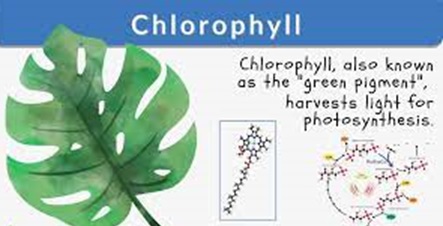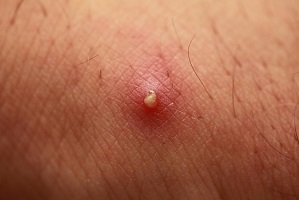Chlorophyll: Benefits, Side Effects and More
Chlorophyll: Benefits, Side Effects and More
The Chlorophyll, or chlorophyllin, despite being poorly absorbed, has antioxidant qualities that protect your kidneys, liver, and gastrointestinal system while also preventing cancer by binding to or interacting with substances that cause cancer.

Another astounding discovery is that hemoglobin and chlorophyll have comparable chemical structures!
In contrast to chlorophyll, which has a magnesium atom in the core of the “heme” ring, hemoglobin has an iron atom.
Put another way, chlorophyll functions as a hemoglobin substitute in an emergency because it is similar to hemoglobin.
What is chlorophyll?
The pigment chlorophyll, which is found naturally in plants, gives them their deep green coloration.
Additionally, photosynthesis—the process by which plants use sunlight to convert carbon dioxide and water into nutrients—needs chlorophyll.
Chlorophyll and its derivatives are present in leafy green plants and herbs, but they are also utilized as an alternative medicine in dietary supplements.
One common form of chlorophyll supplementation is liquid chlorophyll.
According to some studies, chlorophyll contains antioxidant qualities and might provide certain health advantages, such as lowering inflammation.
Yet, there is still a dearth of information and continuous research on the possible advantages of chlorophyll supplements.
Chlorophyll is divided into several classes according to its chemical makeup and occurrence:
- Chlorophyll A is present in all photosynthetic cyanobacteria, algae, and terrestrial plants.
- Chlorophyll B is specifically present in higher plants with chlorophyll and green algae.
- Chlorophyll C: Brown algae and diatoms have it as an auxiliary pigment with chlorophyll A.
- Chlorophyll D is present in certain red algae as an auxiliary pigment alongside chlorophyll A.
Studies are being conducted on uncommon forms of chlorophyll to determine their prevalence and importance.
Why do people take chlorophyll?
Regarding chlorophyll as a treatment, our research is really limited.
Chlorophyll may be able to help block some chemicals that cause cancer, according to some lab testing.
However, whether it would help prevent cancer in humans is unknown.
Supplementing with chlorophyll can help some people with constipation, poor breath, and healing.
However, there isn’t sufficient data to back up these claims.
“Chlorophyllin” is an alternative dietary supplement. Although it is derived from chlorophyll, its functions are different.
How to take chlorophyll supplements
Chlorophyll supplements are available at most drugstores, health food stores, and natural food stores.
Chlorophyll supplements are available in several forms, such as:
- Drugs tablets
- Lotions
- Sprays
- Liquid
Some individuals add liquid forms of chlorophyll to meals as a way to include it in their diets.
The powder version can also be mixed into sauces, juices, and water.
Consult your physician before taking any herbs, vitamins, or chlorophyll.
Natural chlorophyll
Using water and parsley, you can create your own homemade liquid chlorophyll supplement.
About two tablespoons of chlorophyll are produced from three ounces of parsley.
Fresh, green plants are most likely a good source of chlorophyll. This includes herbs and veggies like:
- Arugula
- Alfalfa
- Parsley
- Spinach
- Seaweed
- Spirulina
- Wheatgrass
About 24 mg of chlorophyll can be found in one cup of raw spinach, according to Oregon State University.
A cup of parsley has roughly 19 milligrams. Parsley and water can be blended to make a “liquid chlorophyll” beverage.
A cup of other greens will typically contain 4 to 15 milligrams.
Green, leafy vegetables and herbs are your best source of chlorophyll, both inside and out.
Green vegetables like broccoli and asparagus have less chlorophyll than others, so their interiors are often white.
Dosage and preparation
Chlorophyll liquid is consumed orally. It can be purchased as a powder or liquid to mix with water or another beverage.
Chlorophyll is also available as tablets. Look for it under the section on herbal supplements.
Many drugstores, supermarkets, and health food stores now sell liquid chlorophyll as an over-the-counter supplement.
Juices and smoothies frequently include liquid chlorophyll added to them.
Liquid chlorophyll has no suggested daily consumption.
Each liquid chlorophyll supplement has a different dosage, although a serving typically contains 100 mg.
Chlorophyll and kidneys
Chlorophyll, or chlorophyllin, despite being poorly absorbed, has antioxidant qualities that protect your kidneys, liver, and gastrointestinal system while also preventing cancer by binding to or interacting with substances that cause cancer.
It also purifies your blood.
Chlorophyll poisoning symptoms
If someone does swallow chlorophyll, their urine or stool may appear green, and their tongue may appear yellow or black.
Chlorophyll can cause some burning or itching when it comes into contact with the skin.
Health benefits of chlorophyll ~ Liquid chlorophyll benefits
A qualified healthcare physician, pharmacist, or registered dietitian (RD) should evaluate and customize the use of supplements.
No dietary supplement is meant to diagnose, treat, or avoid any illness.
There are numerous potential health benefits of chlorophyll in people. Not all of these, nevertheless, have strong scientific backing.
The science underlying some of the common applications of chlorophyll is examined below:
Anemia due to a lack of iron: According to several studies, chlorophyll may help alleviate anemia caused by iron deficiency.
However, not much has been studied on the subject.
A 2019 study examined the effects of a supplement containing sodium iron chlorophyllin, a derivative of chlorophyll, in addition to chlorophyll.
For one month, low, moderate, or high dosages of the supplement were administered to adults and children with iron deficiency anemia in the trial.
By the end of the trial, all groups’ total red blood cell counts and red blood cell health had improved, and this was correlated with the supplement.
All adult groups and children who got moderate and high dosages of the supplement also showed improvements in hemoglobin levels.
Skincare: When applied topically, topical chlorophyll may aid in the treatment of several skin issues, such as acne and sun damage.
Topical chlorophyll may help cure mild to moderate acne, according to small pilot studies involving 24 women.
The 21 women who finished the research saw improvements in both aging and acne metrics after eight weeks of treatment.
Nevertheless, the lack of a control group and the small sample size hampered the results, even with the encouraging findings.
To validate chlorophyll’s possible use in skin care, more thorough research is required in this field.
Weight loss: Support for weight loss is among the most widely made claims about liquid chlorophyll.
Nevertheless, there hasn’t been much research done on this subject lately.
According to a 2014 study with 38 female participants, those who took a green plant membrane supplement once a day that included chlorophyll lost more weight than the group that did not take the supplement.
Additionally, the researchers hypothesized that the supplement lowered dangerous cholesterol levels.
It is yet uncertain what mechanism underlies these observations and whether or not chlorophyll is involved.
May encourage a positive aging experience
Retinoids are weapons you may already be familiar with from your healthy-aging armory.
Nevertheless, utilizing them entails enduring the dreaded “retinol uglies.”
There hasn’t been much research done on chlorophyll and healthy aging; more is required to draw valid conclusions.
Might speed up the healing process
The use of chlorophyll as a debriding agent in burn therapy is also promising.
A previous study that was published in Wound Management & Prevention in 2008 discovered that adding chlorophyll greatly decreased pain.
Research confirms this notion once more. A study published in Dermatology in 2021 found that chlorophyll from microalgae helped full-thickness skin wounds heal faster and better with no negative effects.
Enhances detoxification of the liver:
It has been demonstrated that chlorophyll improves the liver’s innate capacity to eliminate waste products and poisons from the body.
We call this procedure “detoxification.”
These capabilities of chlorophyll were first discovered about thirty years ago in a study on the livers of rats and humans.
More specifically, this study discovered that chlorophyllin, a copper/sodium chlorophyll salt, can prevent liver damage and possibly even liver cancer by enhancing the detoxification process.
Other Uses
Despite the possibility of additional functions for chlorophyll, there has been very little investigation into this topic.
Chlorophyll supporters think the pigment may be useful in the following ways:
- An organic deodorant
- Could lessen bloating
- Potentially Clear Acne
- Encourages Bone and Muscle Strengthening
- Bloating
- Tiredness
- Cancerous
Again, though, these and other health claims are unsupported by scientific data. Before taking chlorophyll, make sure to see your physician.
Chlorophyll benefits the lungs
With more oxygen in the airway, we can reduce inflammation in the respiratory tract, which can also aid in allergies and help protect against frequent colds and flu.
Traditional Chinese medicine has used chlorophyll as a treatment for lung support and respiratory distress due to its highly oxidative properties!
Chlorophyll benefits for women
The purported benefits of drinking chlorophyll water are widely promoted on social media and include the following:
- It makes your skin clear, especially if you have rosacea and acne.
- Encourages losing weight.
- It detoxifies your body
- Aids with digestion.
- Aids in cancer prevention.
- Aids in wound and damage healing.
- Acts as a natural odor remover.
- Lessens the inflammatory response.
Chlorophyll benefits for men
When looking for supplements containing chlorophyll, you could find that the following benefits are being advertised:
- Boosting the body’s defenses.
- Getting rid of fungus throughout the body
- Cleaning up your blood
- Washing your digestive system
- Eliminating unpleasant smells.
- Giving the body energy.
- Staving off cancer.
Possible side effects of chlorophyll
Taking liquid chlorophyll carries no appreciable danger.
For almost 50 years, it has been consumed as a safe dietary supplement. Some people should, nevertheless, be mindful of what they consume.
It’s crucial to take into account any potential negative effects before adding a new supplement to your regimen.
There aren’t many negative effects from consuming liquid chlorophyll. They primarily relate to digestion.
Most people think that chlorophyll is safe. Most people can use liquid chlorophyll without any adverse effects.
Among the minimal side effects mentioned are:
- Digestion issues
- Diarrhea
- A stool that is green, yellow, or black may be misinterpreted as gastrointestinal hemorrhage
- When administered topically, stinging or burning
Taking too much liquid chlorophyll or taking it on an empty stomach is the most common cause of these side effects.
Chlorophyll side effects on skin
Moreover, skin that contains chlorophyll may be more susceptible to sunburn.
When skin is exposed to sunlight, using these products together may raise the risk of sunburn, blistering, or rashes.
Contraindication
According to the studies currently available, adverse consequences from ingesting chlorophyll are uncommon.
To establish if liquid chlorophyll is safe for use by those who are pregnant or nursing, however, requires more investigation.
Supplements containing chlorophyll may also interfere with several prescription drugs.
In particular, they may conflict with drugs that make a person more sensitive to sunlight.
Combining photosensitizing medications with chlorophyll can make sunburns and sun damage more likely.
Things to watch out for
Since there is no regulation governing chlorophyll supplements, you should seek out products that have undergone independent testing to ensure safety, efficacy, and purity.
Select supplements manufactured in facilities governed by the FDA if you want the highest quality products.
Conclusion
Plants naturally contain chlorophyll, or it can be supplemented.
It might lower the incidence of cancer and aid in the healing of the skin, among other health benefits.
Still, not much study has been done recently. More research is required to define these possible advantages.
Chlorophyll can be added to your diet by eating more vegetables, such as arugula, spinach, and parsley.
Drugstores and health food stores also sell supplements containing chlorophyll.
Always consult your physician before beginning a new supplement regimen.
FAQs
What to avoid when taking chlorophyll?
Photosensitizing medications, or medications that make you more sensitive to sunshine, interact with chlorophyll.
The skin may become more susceptible to sunlight as a result of some drugs.
CHLOROPHYLL and methotrexate (Trexall, among others) interact. Chlorophyll could slow the rate of methotrexate elimination.
What are the 3 main benefits of chlorophyll?
Chlorophyll is vital to plant life, but it may also be good for human health.
Chlorophyll supporters assert that the pigment, among other benefits, enhances the immune system, increases energy, and detoxifies the body.
What does chlorophyll do for females?
Chlorophyll could aid in reducing body weight.
In a tiny study with 38 female participants, it was discovered that those who took a green plant membrane supplement once a day that contained chlorophyll lost more weight than those who did not.
Lower cholesterol levels were observed in the supplement-taking group as well, according to the study.
Who cannot take chlorophyll?
Certain people may be more susceptible to sunburns if they have chlorophyll.
The safety of chlorophyll for young children, expectant mothers, or nursing mothers is unknown.
Before beginning to consume chlorophyll supplements, see your doctor if you take any medications regularly.
Can chlorophyll cause health problems?
Health Hazards
Thus far, natural chlorophyll has only been beneficial to people; there are no known adverse effects.
Nevertheless, you should be aware of the following potential negative effects of taking chlorophyllin supplements.
Periodic diarrhea: Having pee or feces that are different colors
What happens to your body when you start taking chlorophyll?
Among the many health advantages of chlorophyll is its ability to support healthy skin and lower your risk of developing certain cancers.
Taking liquid chlorophyll is a safe option for most individuals to get more greens in their diet.
Is chlorophyll safe for the liver?
After 16 weeks of treatment, AFB1 levels dropped by an average of 55% more in people who were given chlorophyllin than in people who were given a placebo. This shows that chlorophyllin is safe and effective for supporting liver health.
Does chlorophyll affect your liver?
The benefits of chlorophyll include assisting in the battle against cancer, enhancing liver cleansing, accelerating the healing of wounds, enhancing digestion, controlling weight, and preserving skin health.
Chlorophyll is regarded as a superfood primarily due to its potent anti-oxidant and anti-cancer characteristics.
Is it OK to take chlorophyll every day?
Chlorophyll has been used in commercial products for more than 50 years, and there is no proof that it is harmful.
The suggested daily consumption of 100–200 mg is the maximum amount that may cause mild adverse effects.
Should I take chlorophyll on an empty stomach?
You should be aware of the following possible negative effects of liquid chlorophyll substances:
Stomach cramps, vomiting, and nausea: Significant stomach discomfort is possible, particularly if you take liquid chlorophyll empty-handed.
It works best when consumed with food, just as iron supplements.
What does chlorophyll do for men?
Most green vegetables contain chlorophyll, which some individuals take as a dietary supplement.
Chlorophyll can improve health, increase energy, and combat disease.
Is chlorophyll good for your lady parts?
Long-term usage of chlorophyll is safe since it includes precursors to s*x hormones rather than hormones.
For three months, use chlorophyll at least five days a week.
Don’t take chlorophyll supplements when you are menstruating.
Chlorophyll can be administered once a week to support veginal health after three months.
How much chlorophyll should a woman take daily?
The FDA states that adults and children over 12 can safely take 100 mg to 200 mg of oral chlorophyllin daily as a supplement to alleviate odor.
The daily dose shouldn’t exceed 300 mg, but if necessary, a person can safely take an additional 100 mg.
Does chlorophyll clear skin?
The idea that chlorophyll water clears acne is unsupported by scientific studies, but a green drink with miraculous acne-fighting properties would be wonderful.
Still, only a small amount of clinical research backs up the use of chemicals that are similar to chlorophyll in photodynamic therapy.


